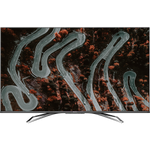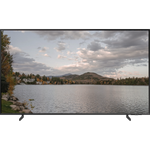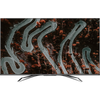A comparison of specs, key information, reviews, and best pricing from top retailers
Last updated -- hours ago | Report incorrect information
What we think

The PerfectRec TV team Learn more
Updated January 10, 2024·
If you prioritize gaming performance and generally watch TV in a dark or moderately lit room, the Hisense U8G is a better option because it's better for gaming and viewing in darker settings. Keep in mind that while the Hisense U8G may be somewhat more expensive, it provides better picture quality overall and better motion handling for fast-moving scenes. Give Feedback
this description is based on the product variant with some specs and product variant with some specs. At the time of writing, the variant with some specs cost some dollars and the variant with some specs cost some dollars.
Advantages of the Hisense U8G (LCD)
- Very good for bright room
- Good for dark room
- Very good for gaming
- Very good for movies & TV
- Very good for news, talk, & other TV
- Good for use as monitor
- Very good reflections
Advantages of the Samsung Q60B (LCD)
- Good motion processing
Key differences
Picture Quality
8.0


7.3
7.63/10
CONTRAST
7.75/10
7.7/10
COLOR VOLUME SCORE
7.2/10
LED FALD
PANEL TYPE
LED
VA
PANEL SUB-TYPE
VA
The Hisense U8G (LCD) has very good picture quality, while the Samsung Q60B (LCD) has good picture quality.
Movies & TV
8.0


6.6
7.63/10
CONTRAST
7.75/10
7.2/10
BLACK UNIFORMITY
8.5/10
7.5/10
UPSCALING
7.5/10
Yes
HDR10 SUPPORT
Yes
Yes
HDR10+ SUPPORT
Yes
Yes
DOLBY VISION SUPPORT
No
The Hisense U8G (LCD) is very good for movies & TV, while the Samsung Q60B (LCD) is only fair.
The Hisense U8G delivers better performance for movies and cinematic TV primarily due to better local dimming capabilities that enhance contrast and black uniformity, creating more depth and realism in dark scenes. The Samsung Q60B, while offering similar contrast, lacks local dimming which can result in less striking dark scenes; however, both TVs provide vibrant colors out of the box and have comparable gray uniformity, which is important for consistent picture quality across the screen.
Gaming
8.3


5.6
8.1/10
RESPONSE TIME SCORE
5.2/10
7.6/10
INPUT LAG SCORE
10.0/10
3.9/10
MOTION PROCESSING
7.0/10
80.0/100
GAMING LOCAL DIMMING
0.0/100
8.6/10
GAME HDR BRIGHTNESS SCORE
6.9/10
The Hisense U8G (LCD) is very good for gaming, while the Samsung Q60B (LCD) is poor.
The Hisense U8G is better suited for gaming due to its faster response time and very good input lag performance, enhancing fast-paced gaming and reducing delay between controller input and on-screen action. In contrast, the Samsung Q60B has a slower response time and poorer input lag performance, which might result in more noticeable delays during gameplay and ghosting effects in fast-moving scenes.
News, Talk, & Other TV
8.6


7.6
8.8/10
SDR BRIGHTNESS SCORE
8.3/10
7.5/10
UPSCALING
7.5/10
The Hisense U8G (LCD) is very good for news, talk, & other TV, while the Samsung Q60B (LCD) is good.
The Hisense U8G excels in delivering very good brightness for SDR content and has superior upscaling, making it very good for watching news and TV programs, along with an excellent out-of-the-box color accuracy and a very good color gamut, enhancing overall picture quality. In comparison, the Samsung Q60B also offers very good SDR brightness and upscaling which makes it good for these viewings but falls short in terms of color gamut which is just good, slightly diminishing the vibrancy and detail in certain content.
Bright Room
8.9


7.1
5.3/10
VIEWING ANGLE
5.3/10
8.8/10
SDR BRIGHTNESS SCORE
8.3/10
8.4/10
HDR BRIGHTNESS SCORE
6.7/10
8.6/10
REFLECTIONS SCORE
6.3/10
The Hisense U8G (LCD) is very good for bright room, while the Samsung Q60B (LCD) is good.
Cost
$1,707


$848
$0
$500
$1,000
$1,500
$2,000
$2,500
$3,000
The Hisense U8G (LCD) has a price of $1,707 and the Samsung Q60B (LCD) costs $848.

Let Us Help Find Your Perfect TV
Find your new TV
Key similarities
Sports
6.4


6.4
3.9/10
MOTION PROCESSING
7.0/10
120Hz
REFRESH RATE
60Hz
7.6/10
INPUT LAG SCORE
10.0/10
7.5/10
UPSCALING
7.5/10
8.8/10
SDR BRIGHTNESS SCORE
8.3/10
Yes
HLG SUPPORT
Yes
The Hisense U8G (LCD) and Samsung Q60B (LCD) are both only fair for sports.
The Hisense U8G has a very good response time which is crucial for smooth motion in sports, but its limited viewing angles can be an issue for group viewings. In comparison, the Samsung Q60B handles reflections only fairly and has a poor response time, leading to more motion blur during fast sports, though it does have similar viewing angles and slightly better gray uniformity than the Hisense U8G.
Cartoons & Animation
8.6


8.4
8.1/10
COLOR GAMUT SCORE
7.2/10
7.7/10
COLOR VOLUME SCORE
7.2/10
8.8/10
SDR BRIGHTNESS SCORE
8.3/10
9.0/10
COLORS OUT OF THE BOX SCORE
9.1/10
6.4/10
GRAY UNIFORMITY
7.2/10
The Hisense U8G (LCD) and Samsung Q60B (LCD) are both very good for cartoons & animation.
The Hisense U8G boasts excellent colors out of the box and a very good color gamut, which ensures vibrant and accurate representation important for animations, but its gray uniformity is good rather than excellent which might affect the viewing of panning shots in cartoons. In contrast, the Samsung Q60B also offers excellent colors straight away and a good color gamut, contributing to a rich display for animated content, though it has better gray uniformity which is advantageous for uniform color scenes but falls short in terms of contrast and SDR brightness when compared to the Hisense U8G.
Give feedback
We’re constantly working to improve.
How the Hisense U8G (LCD) and the Samsung Q60B (LCD) compare to other TVs
Spec Comparison
| Hisense U8G (LCD) | Samsung Q60B (LCD) |
GENERAL | |||
|---|---|---|---|
| Price | |||
$1,707 | $848 | ||
Brand | |||
Brand | Hisense | Samsung | |
Release Date | |||
Release Date | May 2, 2021 | April 5, 2022 | |
Full name | |||
Full name | 65U8G | QN65Q60B | |
Screen Size | |||
Screen Size | 65" | 65" | |
Screen Resolution | |||
Screen Resolution | 4K | 4K | |
TV FEATURES | |||
|---|---|---|---|
Operating System | |||
Operating System | Android TV | Tizen | |
Sound Quality Score | |||
Sound Quality Score | 7.5/10 | 5.9/10 | |
NextGen Ready | |||
NextGen Ready | No | No | |
HDMI Ports | |||
HDMI Ports | 4 | 3 | |
Coax Ports | |||
Coax Ports | 1 | 1 | |
DISPLAY QUALITY SCORES | |||
|---|---|---|---|
Picture Quality Score | |||
Picture Quality Score | 8.1/10 | 7.3/10 | |
Bright Room Score | |||
Bright Room Score | 8.9/10 | 7.1/10 | |
Gaming Score | |||
Gaming Score | 8.3/10 | 5.6/10 | |
Movies & TV Score | |||
Movies & TV Score | 8.1/10 | 6.7/10 | |
Sports Score | |||
Sports Score | 6.4/10 | 6.4/10 | |
PHYSICAL | |||
|---|---|---|---|
Dimensions w/o Stand (H x W x D) | |||
Dimensions w/o Stand (H x W x D) | 33.1" x 57.1" x 4.1" | 32.7" x 57.1" x 1" | |
Dimensions with Stand (H x W) | |||
Dimensions with Stand (H x W) | 35.6" x 57.1" | 37.4" x 63.5" | |
Weight without Stand | |||
Weight without Stand | 53.4 lbs | 46.1 lbs | |
VESA Mount | |||
VESA Mount | 400 x 400 | 400 x 300 | |
DISPLAY | |||
|---|---|---|---|
Color Depth | |||
Color Depth | 10 bit | 10 bit | |
Black Frame Insertion | |||
Black Frame Insertion | Yes | Yes | |
Auto Low Latency Mode | |||
Auto Low Latency Mode | Yes | Yes | |
Contrast | |||
Contrast | 7.6/10 | 7.8/10 | |
Local Dimming | |||
Local Dimming | 8/10 | 2.5/10 | |
SOUND | |||
|---|---|---|---|
Speaker Setup | |||
Speaker Setup | 2.0 | 2.0 | |
Speaker Power | |||
Speaker Power | 20 W | 20 W | |
Dolby Atmos | |||
Dolby Atmos | Yes | Bypass only | |
DTS:X | |||
DTS:X | Yes, Bypass only | No | |
Shopping
Samsung Q60B (LCD)
See more
Dig into reviews and images
CNET
David Katzmaier | June 2022
"Samsung's 2022 QLED workhorse shines in bright rooms and with HDR. The Samsung Q60B stands out from the slew of entry-level TVs with an ultra-thin frame, a skinny profile from the side and even narrow stand legs. The Q60B is a very good bright-room TV, and my subjective impression of its ample light output was proven by measurements."
Get a great deal on the Hisense U8G (LCD) or the Samsung Q60B (LCD)
About Hisense
Hisense, a Chinese TV manufacturer, entered the US market in approximately 2011 and has since acquired TV divisions from various companies such as Toshiba, Sharp, Hitachi, and NEC. Currently ranking as the fourth largest vendor in terms of sales volume, Hisense aims to capture a wide range of TV budget segments. They offer exceptional value with TVs that often outperform their competitors at similar price points, making them a compelling choice for consumers. In the US, they use Google TV as their smart TV software which provides the largest app selection and a very modern user interface, however it is not as user friendly as the software from other vendors.
About Samsung
Samsung, a South Korean electronics manufacturer, holds the title of being the largest global TV vendor in terms of units sold. They offer a diverse lineup of TV products that cater to various budget ranges. A notable achievement in recent years is the development of Quantum Dots, a technology that enhances color reproduction, resulting in richer and more vibrant hues. Samsung TVs are well-regarded for their high manufacturing quality and user-friendly software, making them an excellent choice for consumers seeking an intuitive viewing experience.
Give feedback
We're constantly perfecting our model
TV guides you might be interested in
More comparisons for you
FAQs
FAQs about TVs
Why trust us
This information was produced and vetted by the PerfectRec TVs team. We are a product research and recommendation organization that meticulously reviews and evaluates the latest TV information and makes it digestible for you.
By the numbers
385
TVs evaluated
33,110
TVs stats compiled
21
Proprietary TVs ratings developed
122,130
Recommendations made
18,320
Consumer hours saved
About the TV team
Joe Golden, Ph.D
CEO and TVs Editor
Joe is an entrepreneur and lifelong electronics enthusiast with a Ph.D in Economics from the University of Michigan.
Jason Lew
Staff Expert & Software Engineer
Jason is a staff expert and software engineer that has been making laptop recommendations for 7 years and moderates one of the largest laptop subreddits.
Chandradeep Chowdhury
Staff Expert & Software Engineer
Chandradeep is a staff expert and software engineer and expert in televisions and monitors. He’s been making monitor recommendations for ten years.
Jaime Roldán
TVs Expert
Jaime is a Colombia-based TV expert. He is an electronics engineer with 8 years of experience in the telecom sector and has been making TV recommendations for 12 years.







